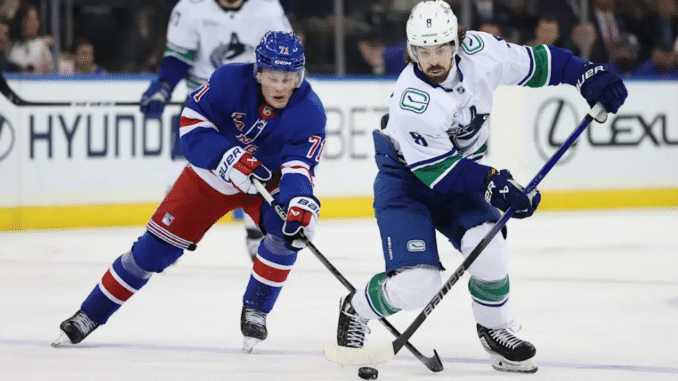
When the New York Rangers acquired forward Juuso Parssinen at the trade deadline in the deal that sent defenseman Ryan Lindgren to the Colorado Avalanche, few expected the 24-year-old to be anything more than a throw-in. After all, Parssinen was skating bottom-six minutes for two different teams this season and had seen his production stall since a promising rookie campaign. Yet, just weeks after his arrival in New York, the Rangers made a surprising move: signing him to a two-year contract extension.
Now, the question isn’t whether Parssinen belongs—it’s whether the Rangers see something others have missed.
A Modest Resume
Parssinen split the 2024–25 season between the Nashville Predators, Colorado Avalanche, and finally the Rangers. In 48 total games, he tallied 16 points (6 goals, 10 assists)—a pace that hardly screams “core player,” but suggests competent depth. His numbers were serviceable if unspectacular: he skated just under 10 minutes a night in Colorado and New York, posting nearly identical offensive production with both clubs.
What made Parssinen expendable for Nashville and Colorado were his underlying numbers. His analytics paint the picture of a player often on the wrong side of possession. In Colorado, his Corsi for percentage (CF%) was a modest 53.47, but that dipped sharply to 36.57 during his short stint with the Rangers. His expected goals percentage (xGF%) followed a similar pattern: 45.71% in Colorado, 35.6% in New York. His goals for percentage (GF%) ballooned to 57.46 with the Rangers, but that spike is widely viewed as unsustainable based on the underlying play-driving metrics.
Why Extend Him?
From the outside, Parssinen’s extension is puzzling. He was acquired in a secondary role, played limited minutes, and didn’t dramatically shift the needle on the ice. Yet New York offered him two more years—a vote of confidence in a player that has struggled to find his footing since his strong 2022–23 debut season.
One possible explanation is cost certainty. As a seventh-round pick with no arbitration leverage and limited production, Parssinen likely signed for a modest cap hit, giving the Rangers a low-risk, low-cost roster option. His size (6-foot-3) and versatility—capable of playing both wing and center—could also be attractive to a front office that values flexible depth.
Still, Parssinen enters a crowded bottom six. The Rangers already have several homegrown forwards and recent acquisitions competing for limited minutes. Many of those players are younger or have more invested developmentally, meaning Parssinen may need to significantly elevate his game to earn consistent time.
Facing an Uphill Climb
Barring a major leap in camp, Parssinen appears destined for a depth role at best—or even a trip through waivers if he’s squeezed out by the numbers game. His brief offensive bump with the Rangers may have bought him another look, but the analytics suggest that his performance was buoyed more by luck than sustainable improvement.
The uphill battle ahead is clear: outshine younger, faster, and more familiar options to justify his new deal. For now, Parssinen is a long shot. But the Rangers—quietly and perhaps curiously—are betting on a player few others have.
Whether that gamble pays off is a story that will unfold over the next two seasons.
Leave a Reply